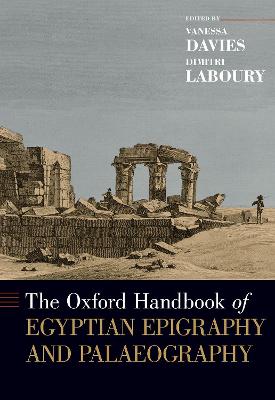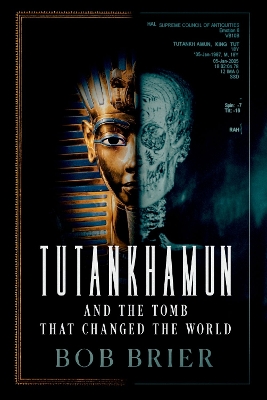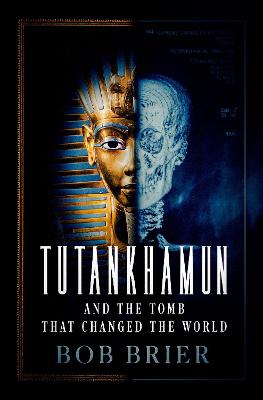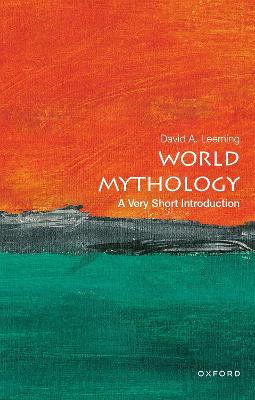Oxford Handbook of Egyptian Epigraphy and Palaeography
 -10%
portes grátis
-10%
portes grátis
Oxford Handbook of Egyptian Epigraphy and Palaeography
Davies, Vanessa; Laboury, Dimitri
Oxford University Press Inc
04/2020
712
Dura
Inglês
9780190604653
15 a 20 dias
1218
Descrição não disponível.
List of Illustrations
Abbreviations
Introduction: Vanessa Davies and Dimitri Laboury
I. Cultural and Material Setting
1. Form, Layout, and Specific Potentialities of the Ancient Egyptian Hieroglyphic Script
Pascal Vernus
2. The Content of Egyptian Wall Decoration
Niv Allon
3. The Egyptian Theory of Monumental Writing as Related to Permanence or Endurance
Boyo G. Ockinga
4. The Historical Record
Peter Brand
5. Egyptian Epigraphic Genres and Their Relation with Non-epigraphic Ones
Julie Stauder-Porchet and Andreas Stauder
6. Designers and Makers of Ancient Egyptian Monumental Epigraphy
Dimitri Laboury
7. Audiences
Hana Navratilova
8. The Materials, Tools, and Work of Carving and Painting
Denys A. Stocks
9. Recording Epigraphic Sources as Part of Artworks
Gabriele Pieke
II. Historical Efforts at Epigraphy
1. When Ancient Egyptians Copied Egyptian Work
Tamas A. Bacs
2. When Classical Authors Encountered Egyptian Epigraphy
Jean Winand
3. Interpretations and Re-use of Ancient Egyptian Hieroglyphs in the Arabic Period (Tenth-Sixteenth Centuries CE)
Annette Sundermeyer
4. The Reception of Ancient Egypt and Its Script in Renaissance Europe
Lucie Jiraskova
5. The Epigraphy of Egyptian Monuments in the Description de l'Egypte
Eric Gady
6. The Rosetta Stone, Copying an Ancient Copy
Ilona Regulski
7. The Epigraphic Work of Early Egyptologists and Travelers to Egypt
Lise Manniche
8. Karl Richard Lepsius and The Royal Prussian Expedition to Egypt (1842-1845/6)
Christian E. Loeben
9. Nineteenth-Century Foundations of Modern Epigraphy
Virginia L. Emery
10. Late Nineteenth- and Early Twentieth-Century Developments in Epigraphy
Vanessa Davies
III. Traditional and New Techniques of Epigraphy
1. How to Publish an Egyptian Temple?
Claude Traunecker
2. Epigraphic Techniques Used by the Edfu Project
Dieter Kurth
3. Online Publication of Monuments
Willeke Wendrich
4. Tradition and Innovation in Digital Epigraphy
Krisztian Vertes
5. 3D scanning, Photogrammetry, and Photo Rectification of Columns in the Karnak Hypostyle Hall
Jean Revez
6. An Assessment of Digital Epigraphy and Related Technologies
Peter Der Manuelian
7. Typical, Atypical, and Downright Strange Epigraphic Techniques
Will Schenck
8. The Chicago House Method
J. Brett McClain
9. The So-called "Karnak Method"
Christophe Thiers
10. Practical Issues Concerning Epigraphic Work in Tombs and Temples
Hanane Gaber
11. The Application of a Logic of Writing-Imagery to Palaeographic Interpretation in the Formative Phase of Writing
Ludwig Morenz
12. Reading, Editing, and Appreciating the Texts of Greco-Roman Temples
Laure Pantalacci
13. History of Recording Demotic Epigraphy
Jan Moje
14. Graffiti
Chiara Salvador
15. Practical Issues with the Epigraphic Restoration of a Biographical Inscription
Andres Diego Espinel
16. Relationships between the Community of Sheikh Abd al-Qurna and Ancient Egyptian Monuments
Andrew Bednarski and Gemma Tully
IV. Issues in Paleography
1. The Significance of Medium in Palaeographic Study
Dimitri Meeks
2. Hieroglyphic Palaeography
Frederic Servajean
3. Methods, Tools, and Perspectives of Hieratic Palaeography
Stephane Polis
4. Carved Hybrid Script
Mohamed Sherif Ali
5. Cursive Hieroglyphs in the Book of the Dead
Rita Lucarelli
6. Some Issues in and Perhaps a New Methodology for Abnormal Hieratic
Koen Donker van Heel
7. Demotic Palaeography
Joachim Quack, Jannik Korte, Fabian Wespi, Claudia Maderna-Sieben
8. Issues and Methodologies in Coptic Palaeography
Anne Boud'hors
9. Digital Palaeography of Hieratic
Svenja A. Guelden, Celia Krause, Ursula Verhoeven
10. Hieratic Palaeography in Literary and Documentary Texts from Deir el-Medina
Hans-Werner Fischer-Elfert
Index
Abbreviations
Introduction: Vanessa Davies and Dimitri Laboury
I. Cultural and Material Setting
1. Form, Layout, and Specific Potentialities of the Ancient Egyptian Hieroglyphic Script
Pascal Vernus
2. The Content of Egyptian Wall Decoration
Niv Allon
3. The Egyptian Theory of Monumental Writing as Related to Permanence or Endurance
Boyo G. Ockinga
4. The Historical Record
Peter Brand
5. Egyptian Epigraphic Genres and Their Relation with Non-epigraphic Ones
Julie Stauder-Porchet and Andreas Stauder
6. Designers and Makers of Ancient Egyptian Monumental Epigraphy
Dimitri Laboury
7. Audiences
Hana Navratilova
8. The Materials, Tools, and Work of Carving and Painting
Denys A. Stocks
9. Recording Epigraphic Sources as Part of Artworks
Gabriele Pieke
II. Historical Efforts at Epigraphy
1. When Ancient Egyptians Copied Egyptian Work
Tamas A. Bacs
2. When Classical Authors Encountered Egyptian Epigraphy
Jean Winand
3. Interpretations and Re-use of Ancient Egyptian Hieroglyphs in the Arabic Period (Tenth-Sixteenth Centuries CE)
Annette Sundermeyer
4. The Reception of Ancient Egypt and Its Script in Renaissance Europe
Lucie Jiraskova
5. The Epigraphy of Egyptian Monuments in the Description de l'Egypte
Eric Gady
6. The Rosetta Stone, Copying an Ancient Copy
Ilona Regulski
7. The Epigraphic Work of Early Egyptologists and Travelers to Egypt
Lise Manniche
8. Karl Richard Lepsius and The Royal Prussian Expedition to Egypt (1842-1845/6)
Christian E. Loeben
9. Nineteenth-Century Foundations of Modern Epigraphy
Virginia L. Emery
10. Late Nineteenth- and Early Twentieth-Century Developments in Epigraphy
Vanessa Davies
III. Traditional and New Techniques of Epigraphy
1. How to Publish an Egyptian Temple?
Claude Traunecker
2. Epigraphic Techniques Used by the Edfu Project
Dieter Kurth
3. Online Publication of Monuments
Willeke Wendrich
4. Tradition and Innovation in Digital Epigraphy
Krisztian Vertes
5. 3D scanning, Photogrammetry, and Photo Rectification of Columns in the Karnak Hypostyle Hall
Jean Revez
6. An Assessment of Digital Epigraphy and Related Technologies
Peter Der Manuelian
7. Typical, Atypical, and Downright Strange Epigraphic Techniques
Will Schenck
8. The Chicago House Method
J. Brett McClain
9. The So-called "Karnak Method"
Christophe Thiers
10. Practical Issues Concerning Epigraphic Work in Tombs and Temples
Hanane Gaber
11. The Application of a Logic of Writing-Imagery to Palaeographic Interpretation in the Formative Phase of Writing
Ludwig Morenz
12. Reading, Editing, and Appreciating the Texts of Greco-Roman Temples
Laure Pantalacci
13. History of Recording Demotic Epigraphy
Jan Moje
14. Graffiti
Chiara Salvador
15. Practical Issues with the Epigraphic Restoration of a Biographical Inscription
Andres Diego Espinel
16. Relationships between the Community of Sheikh Abd al-Qurna and Ancient Egyptian Monuments
Andrew Bednarski and Gemma Tully
IV. Issues in Paleography
1. The Significance of Medium in Palaeographic Study
Dimitri Meeks
2. Hieroglyphic Palaeography
Frederic Servajean
3. Methods, Tools, and Perspectives of Hieratic Palaeography
Stephane Polis
4. Carved Hybrid Script
Mohamed Sherif Ali
5. Cursive Hieroglyphs in the Book of the Dead
Rita Lucarelli
6. Some Issues in and Perhaps a New Methodology for Abnormal Hieratic
Koen Donker van Heel
7. Demotic Palaeography
Joachim Quack, Jannik Korte, Fabian Wespi, Claudia Maderna-Sieben
8. Issues and Methodologies in Coptic Palaeography
Anne Boud'hors
9. Digital Palaeography of Hieratic
Svenja A. Guelden, Celia Krause, Ursula Verhoeven
10. Hieratic Palaeography in Literary and Documentary Texts from Deir el-Medina
Hans-Werner Fischer-Elfert
Index
Este título pertence ao(s) assunto(s) indicados(s). Para ver outros títulos clique no assunto desejado.
List of Illustrations
Abbreviations
Introduction: Vanessa Davies and Dimitri Laboury
I. Cultural and Material Setting
1. Form, Layout, and Specific Potentialities of the Ancient Egyptian Hieroglyphic Script
Pascal Vernus
2. The Content of Egyptian Wall Decoration
Niv Allon
3. The Egyptian Theory of Monumental Writing as Related to Permanence or Endurance
Boyo G. Ockinga
4. The Historical Record
Peter Brand
5. Egyptian Epigraphic Genres and Their Relation with Non-epigraphic Ones
Julie Stauder-Porchet and Andreas Stauder
6. Designers and Makers of Ancient Egyptian Monumental Epigraphy
Dimitri Laboury
7. Audiences
Hana Navratilova
8. The Materials, Tools, and Work of Carving and Painting
Denys A. Stocks
9. Recording Epigraphic Sources as Part of Artworks
Gabriele Pieke
II. Historical Efforts at Epigraphy
1. When Ancient Egyptians Copied Egyptian Work
Tamas A. Bacs
2. When Classical Authors Encountered Egyptian Epigraphy
Jean Winand
3. Interpretations and Re-use of Ancient Egyptian Hieroglyphs in the Arabic Period (Tenth-Sixteenth Centuries CE)
Annette Sundermeyer
4. The Reception of Ancient Egypt and Its Script in Renaissance Europe
Lucie Jiraskova
5. The Epigraphy of Egyptian Monuments in the Description de l'Egypte
Eric Gady
6. The Rosetta Stone, Copying an Ancient Copy
Ilona Regulski
7. The Epigraphic Work of Early Egyptologists and Travelers to Egypt
Lise Manniche
8. Karl Richard Lepsius and The Royal Prussian Expedition to Egypt (1842-1845/6)
Christian E. Loeben
9. Nineteenth-Century Foundations of Modern Epigraphy
Virginia L. Emery
10. Late Nineteenth- and Early Twentieth-Century Developments in Epigraphy
Vanessa Davies
III. Traditional and New Techniques of Epigraphy
1. How to Publish an Egyptian Temple?
Claude Traunecker
2. Epigraphic Techniques Used by the Edfu Project
Dieter Kurth
3. Online Publication of Monuments
Willeke Wendrich
4. Tradition and Innovation in Digital Epigraphy
Krisztian Vertes
5. 3D scanning, Photogrammetry, and Photo Rectification of Columns in the Karnak Hypostyle Hall
Jean Revez
6. An Assessment of Digital Epigraphy and Related Technologies
Peter Der Manuelian
7. Typical, Atypical, and Downright Strange Epigraphic Techniques
Will Schenck
8. The Chicago House Method
J. Brett McClain
9. The So-called "Karnak Method"
Christophe Thiers
10. Practical Issues Concerning Epigraphic Work in Tombs and Temples
Hanane Gaber
11. The Application of a Logic of Writing-Imagery to Palaeographic Interpretation in the Formative Phase of Writing
Ludwig Morenz
12. Reading, Editing, and Appreciating the Texts of Greco-Roman Temples
Laure Pantalacci
13. History of Recording Demotic Epigraphy
Jan Moje
14. Graffiti
Chiara Salvador
15. Practical Issues with the Epigraphic Restoration of a Biographical Inscription
Andres Diego Espinel
16. Relationships between the Community of Sheikh Abd al-Qurna and Ancient Egyptian Monuments
Andrew Bednarski and Gemma Tully
IV. Issues in Paleography
1. The Significance of Medium in Palaeographic Study
Dimitri Meeks
2. Hieroglyphic Palaeography
Frederic Servajean
3. Methods, Tools, and Perspectives of Hieratic Palaeography
Stephane Polis
4. Carved Hybrid Script
Mohamed Sherif Ali
5. Cursive Hieroglyphs in the Book of the Dead
Rita Lucarelli
6. Some Issues in and Perhaps a New Methodology for Abnormal Hieratic
Koen Donker van Heel
7. Demotic Palaeography
Joachim Quack, Jannik Korte, Fabian Wespi, Claudia Maderna-Sieben
8. Issues and Methodologies in Coptic Palaeography
Anne Boud'hors
9. Digital Palaeography of Hieratic
Svenja A. Guelden, Celia Krause, Ursula Verhoeven
10. Hieratic Palaeography in Literary and Documentary Texts from Deir el-Medina
Hans-Werner Fischer-Elfert
Index
Abbreviations
Introduction: Vanessa Davies and Dimitri Laboury
I. Cultural and Material Setting
1. Form, Layout, and Specific Potentialities of the Ancient Egyptian Hieroglyphic Script
Pascal Vernus
2. The Content of Egyptian Wall Decoration
Niv Allon
3. The Egyptian Theory of Monumental Writing as Related to Permanence or Endurance
Boyo G. Ockinga
4. The Historical Record
Peter Brand
5. Egyptian Epigraphic Genres and Their Relation with Non-epigraphic Ones
Julie Stauder-Porchet and Andreas Stauder
6. Designers and Makers of Ancient Egyptian Monumental Epigraphy
Dimitri Laboury
7. Audiences
Hana Navratilova
8. The Materials, Tools, and Work of Carving and Painting
Denys A. Stocks
9. Recording Epigraphic Sources as Part of Artworks
Gabriele Pieke
II. Historical Efforts at Epigraphy
1. When Ancient Egyptians Copied Egyptian Work
Tamas A. Bacs
2. When Classical Authors Encountered Egyptian Epigraphy
Jean Winand
3. Interpretations and Re-use of Ancient Egyptian Hieroglyphs in the Arabic Period (Tenth-Sixteenth Centuries CE)
Annette Sundermeyer
4. The Reception of Ancient Egypt and Its Script in Renaissance Europe
Lucie Jiraskova
5. The Epigraphy of Egyptian Monuments in the Description de l'Egypte
Eric Gady
6. The Rosetta Stone, Copying an Ancient Copy
Ilona Regulski
7. The Epigraphic Work of Early Egyptologists and Travelers to Egypt
Lise Manniche
8. Karl Richard Lepsius and The Royal Prussian Expedition to Egypt (1842-1845/6)
Christian E. Loeben
9. Nineteenth-Century Foundations of Modern Epigraphy
Virginia L. Emery
10. Late Nineteenth- and Early Twentieth-Century Developments in Epigraphy
Vanessa Davies
III. Traditional and New Techniques of Epigraphy
1. How to Publish an Egyptian Temple?
Claude Traunecker
2. Epigraphic Techniques Used by the Edfu Project
Dieter Kurth
3. Online Publication of Monuments
Willeke Wendrich
4. Tradition and Innovation in Digital Epigraphy
Krisztian Vertes
5. 3D scanning, Photogrammetry, and Photo Rectification of Columns in the Karnak Hypostyle Hall
Jean Revez
6. An Assessment of Digital Epigraphy and Related Technologies
Peter Der Manuelian
7. Typical, Atypical, and Downright Strange Epigraphic Techniques
Will Schenck
8. The Chicago House Method
J. Brett McClain
9. The So-called "Karnak Method"
Christophe Thiers
10. Practical Issues Concerning Epigraphic Work in Tombs and Temples
Hanane Gaber
11. The Application of a Logic of Writing-Imagery to Palaeographic Interpretation in the Formative Phase of Writing
Ludwig Morenz
12. Reading, Editing, and Appreciating the Texts of Greco-Roman Temples
Laure Pantalacci
13. History of Recording Demotic Epigraphy
Jan Moje
14. Graffiti
Chiara Salvador
15. Practical Issues with the Epigraphic Restoration of a Biographical Inscription
Andres Diego Espinel
16. Relationships between the Community of Sheikh Abd al-Qurna and Ancient Egyptian Monuments
Andrew Bednarski and Gemma Tully
IV. Issues in Paleography
1. The Significance of Medium in Palaeographic Study
Dimitri Meeks
2. Hieroglyphic Palaeography
Frederic Servajean
3. Methods, Tools, and Perspectives of Hieratic Palaeography
Stephane Polis
4. Carved Hybrid Script
Mohamed Sherif Ali
5. Cursive Hieroglyphs in the Book of the Dead
Rita Lucarelli
6. Some Issues in and Perhaps a New Methodology for Abnormal Hieratic
Koen Donker van Heel
7. Demotic Palaeography
Joachim Quack, Jannik Korte, Fabian Wespi, Claudia Maderna-Sieben
8. Issues and Methodologies in Coptic Palaeography
Anne Boud'hors
9. Digital Palaeography of Hieratic
Svenja A. Guelden, Celia Krause, Ursula Verhoeven
10. Hieratic Palaeography in Literary and Documentary Texts from Deir el-Medina
Hans-Werner Fischer-Elfert
Index
Este título pertence ao(s) assunto(s) indicados(s). Para ver outros títulos clique no assunto desejado.







